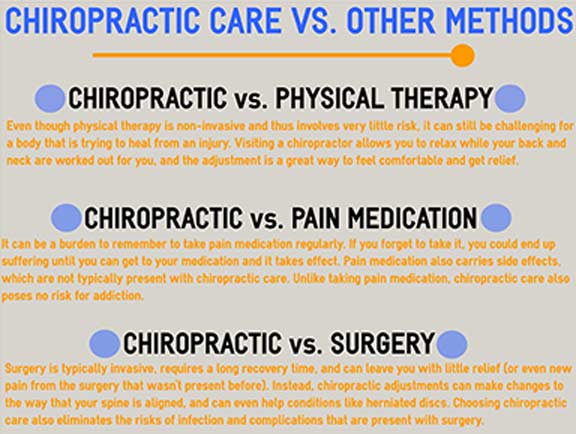The Impact Of Stance On Neck And Back Pain: Standards For Maintaining Excellent Positioning Throughout Your Day-To-Day Routine
The Impact Of Stance On Neck And Back Pain: Standards For Maintaining Excellent Positioning Throughout Your Day-To-Day Routine
Blog Article
Material Author-Bush Bennett
Keeping appropriate posture isn't almost sitting up straight; it has to do with aligning your body in such a way that sustains your back and lowers the danger of pain in the back. The way you sit, stand, and move throughout the day can considerably influence your back health and wellness. But just how specifically can you make certain excellent alignment consistently, also during active days filled with numerous activities? Allow's dig deeper right into the subtle yet impactful adjustments you can make to your everyday routine to maintain your back satisfied and healthy and balanced.
Significance of Appropriate Position
Correct posture is vital in preserving a healthy back and preventing discomfort. When you rest or stand with good posture, your spinal column remains in positioning, minimizing pressure on your muscle mass, ligaments, and joints. This alignment allows the body to disperse weight uniformly, stopping extreme tension on particular areas that can cause discomfort and pain. By maintaining your spinal column correctly lined up, you can additionally improve your breathing and digestion, as slouching can compress organs and restrict their performance.
Furthermore, maintaining excellent stance can enhance your general appearance and self-confidence. When you stand tall with your shoulders back and head held high, you emanate self-confidence and appear more friendly. Excellent stance can likewise make you feel a lot more invigorated and sharp, as it promotes appropriate blood circulation and permits your muscle mass to work efficiently.
Incorporating correct position into your everyday routine, whether sitting at a desk, strolling, or exercising, is important for stopping back pain and advertising total well-being. Keep in mind, a small modification in how you hold on your own can make a considerable difference in how you feel and function throughout the day.
Common Postural Mistakes
When it involves preserving great posture, many individuals unknowingly make usual mistakes that can add to back pain and pain. Among one of the most common mistakes is slumping over or stooping over while resting or standing. This placement places too much pressure on the spine and can bring about muscle imbalances and pain over time.
One more common mistake is overarching the reduced back, which can squash the all-natural curve of the spine and trigger discomfort. Furthermore, crossing https://www.chiroeco.com/patient-content/ while sitting may feel comfortable, however it can create an inequality in the hips and pelvis, bring about postural issues.
Using a cushion that's too soft or also solid while sleeping can likewise impact your alignment and add to pain in the back. Finally, continuously craning your neck to take a look at displays or adjusting your placement often can stress the neck and shoulders. Being https://rivereytmg.blogunok.com/34016869/efficiency-enhancement-through-sports-massage-might-amaze-you-uncover-the-auto-mechanics-and-benefits-that-can-raise-your-video-game-to-the-following-degree of these usual postural blunders can aid you preserve better placement and decrease the threat of neck and back pain.
Tips for Correcting Positioning
To boost your alignment and decrease pain in the back, it's important to concentrate on making small modifications throughout your day-to-day routine. Begin by being mindful of your posture. When resting, guarantee your feet are level on the floor, your back is straight, and your shoulders are relaxed. Avoid slouching or leaning to one side. Usage ergonomic chairs or paddings to sustain your lower back.
When standing, disperse your weight equally on both feet, maintain your knees a little bent, and embed your pelvis. Engage your core muscular tissues to support your back. Take breaks to extend and walk around if you have an inactive task. Include exercises that enhance your core and back muscular tissues, such as planks or bridges.
While sleeping, make use of a cushion that sustains the all-natural curve of your neck to keep correct spine positioning. Avoid sleeping on your stomach, as it can stress your neck and back. By bearing in mind these suggestions and making small modifications, you can gradually correct your positioning and minimize neck and back pain.
Final thought
Bear in mind, preserving great posture is essential to stop pain in the back and promoting spine health. By being mindful of your placement, distributing weight equally, and involving your core muscles, you can minimize pressure on your back and minimize the threat of pain and injury. Include ergonomic assistance, take routine breaks to stretch, and enhance your core and back muscles to keep appropriate alignment throughout the day. Your back will certainly thank you for it!
